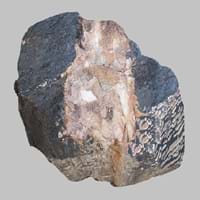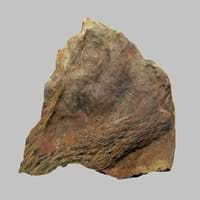Claystone and Siltstone
Definition
Definition
Claystone is a fine-grained, dark gray to pink sedimentary rock which mainly consists of compacted and hardened clay
Siltstone can be defined as a fine-grained sedimentary rock which mainly consists of consolidated silt
History
Discoverer
Unknown
Unknown
Etymology
From English clay and stone as the rock contains more amount of clay
From English word silt and stone and from Proto-Indo-European root sal and stainaz
Class
Sedimentary Rocks
Sedimentary Rocks
Sub-Class
Durable Rock, Medium Hardness Rock
Durable Rock, Hard Rock
Family
Group
Not Applicable
Not Applicable
Other Categories
Fine Grained Rock, Opaque Rock
Fine Grained Rock, Opaque Rock
Texture
Texture
Clastic
Clastic
Color
Black, Blue, Brown, Green, Grey, Orange, Red, White, Yellow
Brown, Red, Reddish Brown
Maintenance
More
Less
Durability
Durable
Durable
Water Resistant
Yes
Yes
Scratch Resistant
Yes
Yes
Stain Resistant
No
No
Wind Resistant
No
Yes
Acid Resistant
No
Yes
Appearance
Rough and Dull
Rough
Uses
Architecture
Interior Uses
Decorative Aggregates, Entryways, Floor Tiles, Homes, Interior Decoration
Decorative Aggregates, Interior Decoration
Exterior Uses
As Facing Stone, Roof Tiles
As Building Stone, As Facing Stone, Garden Decoration
Other Architectural Uses
Curbing
Curbing
Industry
Construction Industry
As a Sintering Agent in Steel Industry to process Iron Ore, Cement Manufacture, Construction Aggregate, for Road Aggregate, Making natural cement, Raw material for the manufacture of mortar
Building houses or walls, Cement Manufacture, Construction Aggregate, for Road Aggregate, Making natural cement, Raw material for the manufacture of mortar
Medical Industry
Not Yet Used
Not Yet Used
Antiquity Uses
Artifacts, Sculpture, Small Figurines
Artifacts, Sculpture, Small Figurines
Other Uses
Commercial Uses
Pottery
Raw material for the manufacture of mortar, Soil Conditioner
Types
Types
Not Available
Not Available
Features
Available in Lots of Colors and Patterns, Smooth to touch, Very fine grained rock
Available in Lots of Colors and Patterns, Easily splits into thin plates, Generally rough to touch, High silica content, Very fine grained rock
Archaeological Significance
Monuments
Not Yet Used
Not Yet Used
Famous Monuments
Not Applicable
Not Applicable
Sculpture
Used
Used
Famous Sculptures
Data Not Available
Data Not Available
Pictographs
Used
Not Used
Petroglyphs
Used
Not Used
Figurines
Used
Used
Fossils
Present
Present
Formation
Formation
Claystone is generally quite soft, but can be hard and brittle. It forms due to weathering of mudstone.
Siltstone is a type of sedimentary rock which is formed from fine rock particles. As the particles of eroded rock travel along with water, the edges of the rock are worn-out by water into a rounded shape.
Composition
Mineral Content
Biotite, Chlorite, Feldspar, Micas, Muscovite or Illite, Plagioclase, Pyrite, Quartz
Calcite, Clay, Clay Minerals, Feldspar, Micas, Quartz, Sand, Silica, Silt
Compound Content
Aluminium Oxide, Ca, NaCl, CaO, Iron(III) Oxide, MgO, Silicon Dioxide
Aluminium Oxide, CaO, Iron(III) Oxide, Potassium Oxide, MgO, Sodium Oxide, Silicon Dioxide
Transformation
Metamorphism
No
No
Types of Metamorphism
Not Applicable
Not Applicable
Weathering
Yes
Yes
Types of Weathering
Biological Weathering, Chemical Weathering, Mechanical Weathering
Biological Weathering, Chemical Weathering, Mechanical Weathering
Erosion
Yes
Yes
Types of Erosion
Coastal Erosion, Water Erosion
Chemical Erosion, Coastal Erosion, Glacier Erosion
Properties
Physical Properties
Hardness
3.5-4
6-7
Grain Size
Fine Grained
Fine Grained
Fracture
Not Available
Conchoidal
Streak
White
White
Porosity
Very Less Porous
Highly Porous
Luster
Dull
Dull
Cleavage
Perfect
Not Available
Toughness
2.6
2.6
Specific Gravity
0
2.54-2.73
Transparency
Opaque
Opaque
Density
2-2.9 g/cm3
2.6-2.7 g/cm3
Thermal Properties
Specific Heat Capacity
0.92 kJ/Kg K
10
Not Available
Resistance
Heat Resistant, Impact Resistant
Heat Resistant, Impact Resistant, Pressure Resistant, Water Resistant
Reserves
Deposits in Eastern Continents
Asia
Bangladesh, China, India, Russia
China, India, Kazakhstan, Mongolia, Russia, Uzbekistan
Africa
Ethiopia, Kenya, Morocco, South Africa, Tanzania
Namibia, Nigeria, South Africa
Europe
Austria, France, Germany, Greece, Italy, Romania, Scotland, Spain, Switzerland
Austria, Denmark, Germany, Great Britain, Netherlands, Norway, Poland, Sweden, Switzerland, United Kingdom
Others
Not Yet Found
Greenland
Deposits in Western Continents
North America
Canada, Panama, USA
Canada, USA
South America
Bolivia, Chile, Colombia, Ecuador, Peru, Venezuela
Brazil
Deposits in Oceania Continent
Australia
New South Wales, New Zealand, Queensland, Victoria, Western Australia
New South Wales, New Zealand
All about Claystone and Siltstone Properties
Know all about Claystone and Siltstone properties here. All properties of rocks are important as they define the type of rock and its application. Claystone and Siltstone belong to Sedimentary Rocks.Texture of Claystone is Clastic whereas that of Siltstone is Clastic. Claystone appears Rough and Dull and Siltstone appears Rough. The luster of Claystone and Siltstone is dull. Claystone is available in black, blue, brown, green, grey, orange, red, white, yellow colors whereas Siltstone is available in brown, red, reddish brown colors. The commercial uses of Claystone are pottery and that of Siltstone are raw material for the manufacture of mortar, soil conditioner.
|
||
|
||
|










